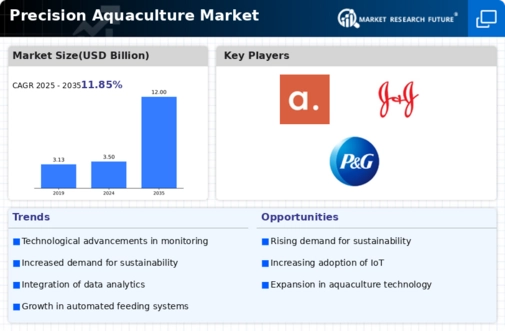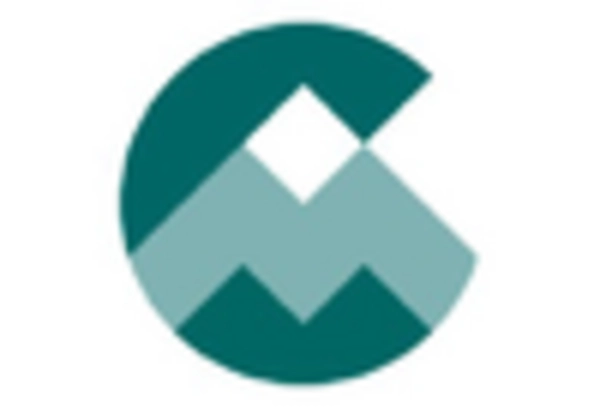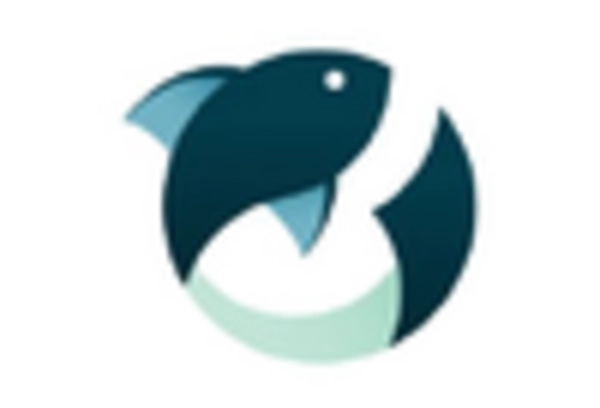The Precision Aquaculture Market is currently characterized by a dynamic competitive landscape, driven by technological advancements and a growing emphasis on sustainability. Key players are increasingly focusing on innovation and strategic partnerships to enhance their market positioning. Companies such as Aquabyte (NO), XpertSea (CA), and eFishery (ID) are at the forefront, leveraging digital transformation and data analytics to optimize aquaculture practices. Their collective strategies not only enhance operational efficiency but also contribute to a more sustainable aquaculture ecosystem, thereby shaping the competitive environment in significant ways.
In terms of business tactics, companies are localizing manufacturing and optimizing supply chains to respond to regional demands effectively. The market appears moderately fragmented, with several players vying for market share. However, the influence of major companies is palpable, as they set benchmarks for innovation and operational excellence. This competitive structure fosters an environment where smaller firms may struggle to keep pace, yet it also encourages collaboration and knowledge sharing among industry participants.
In August 2025, Aquabyte (NO) announced a partnership with a leading Norwegian seafood company to implement its AI-driven fish monitoring technology. This collaboration is poised to enhance fish health management and feed optimization, reflecting a strategic move towards integrating advanced technology in aquaculture practices. The partnership underscores Aquabyte's commitment to sustainability and operational efficiency, potentially setting a new standard in the industry.
In September 2025, XpertSea (CA) launched a new version of its data analytics platform, aimed at improving hatchery management for shrimp farmers. This upgrade is significant as it incorporates machine learning algorithms to predict growth rates and optimize feeding schedules. By enhancing decision-making capabilities for farmers, XpertSea is likely to strengthen its market position and drive further adoption of precision aquaculture technologies.
In July 2025, eFishery (ID) expanded its operations into Southeast Asia, establishing a new facility in Vietnam. This strategic move not only broadens its geographical footprint but also aligns with the growing demand for sustainable aquaculture solutions in the region. By localizing its operations, eFishery aims to enhance supply chain efficiency and better serve its customers, which may lead to increased market penetration and brand loyalty.
As of October 2025, the Precision Aquaculture Market is witnessing trends such as digitalization, sustainability, and AI integration, which are redefining competitive dynamics. Strategic alliances among key players are becoming increasingly common, fostering innovation and collaborative growth. Looking ahead, it is anticipated that competitive differentiation will evolve, shifting from traditional price-based competition to a focus on technological innovation, sustainability, and supply chain reliability. This transition may ultimately reshape the market landscape, encouraging a more resilient and forward-thinking aquaculture industry.
















Leave a Comment